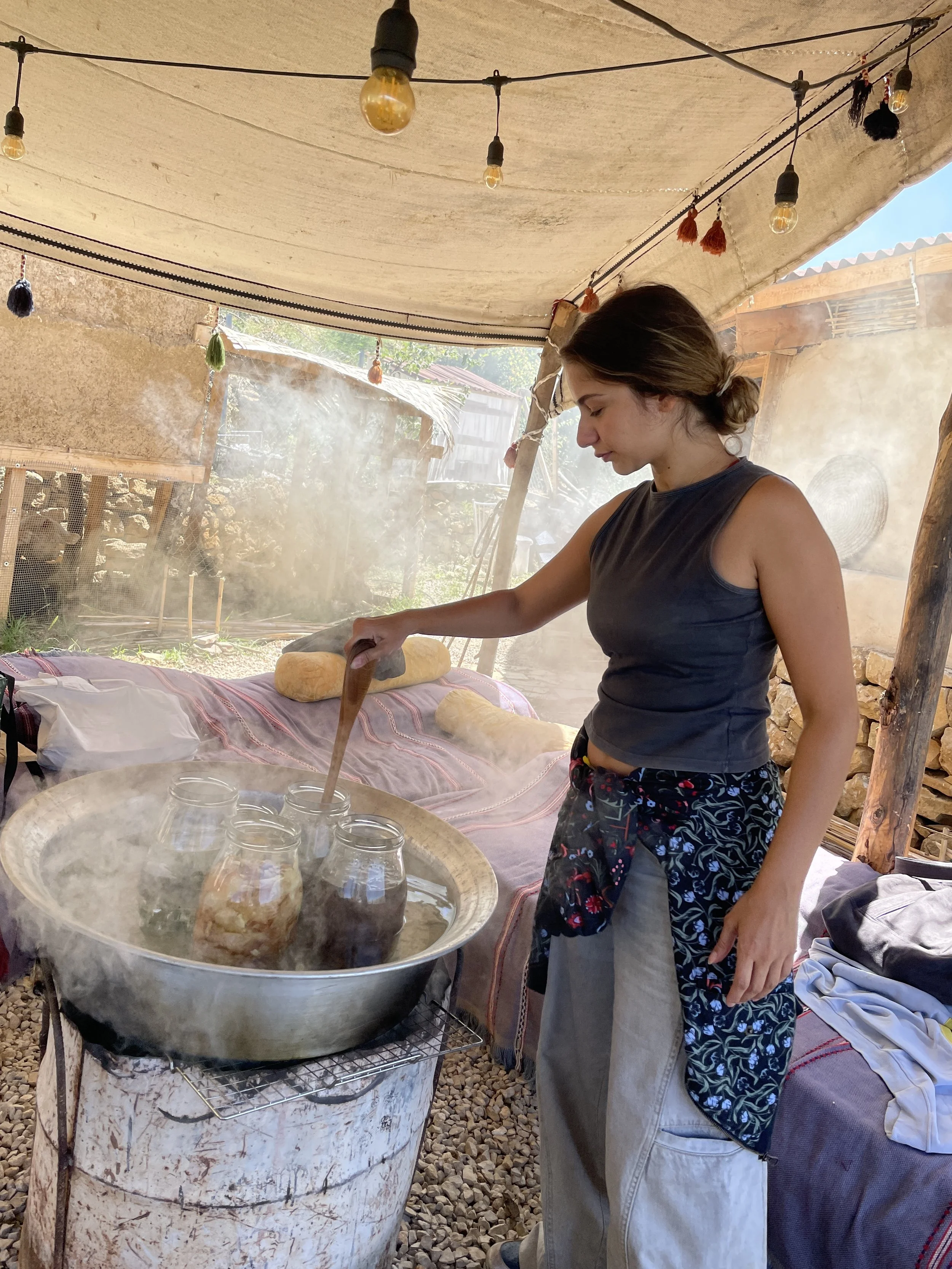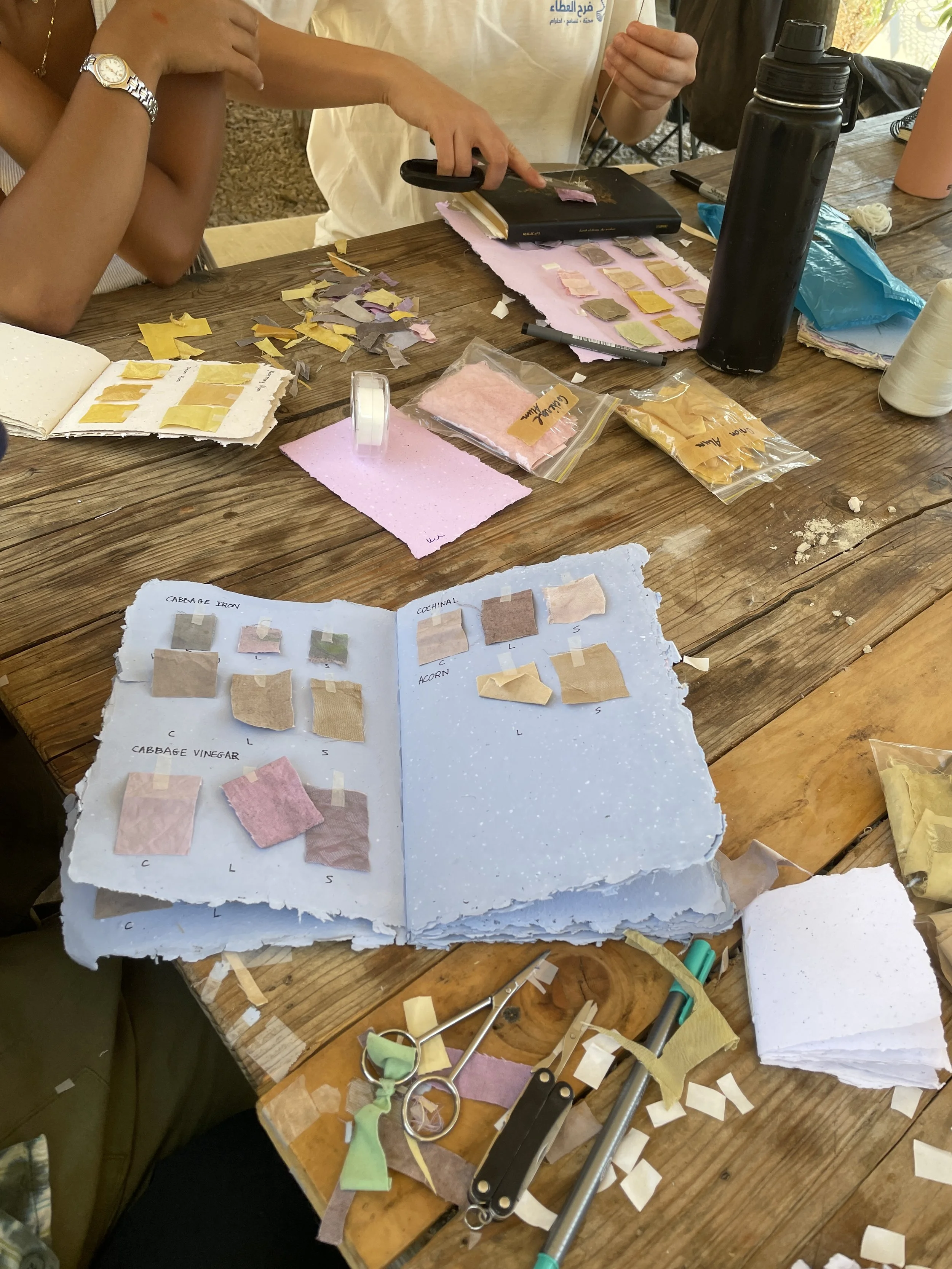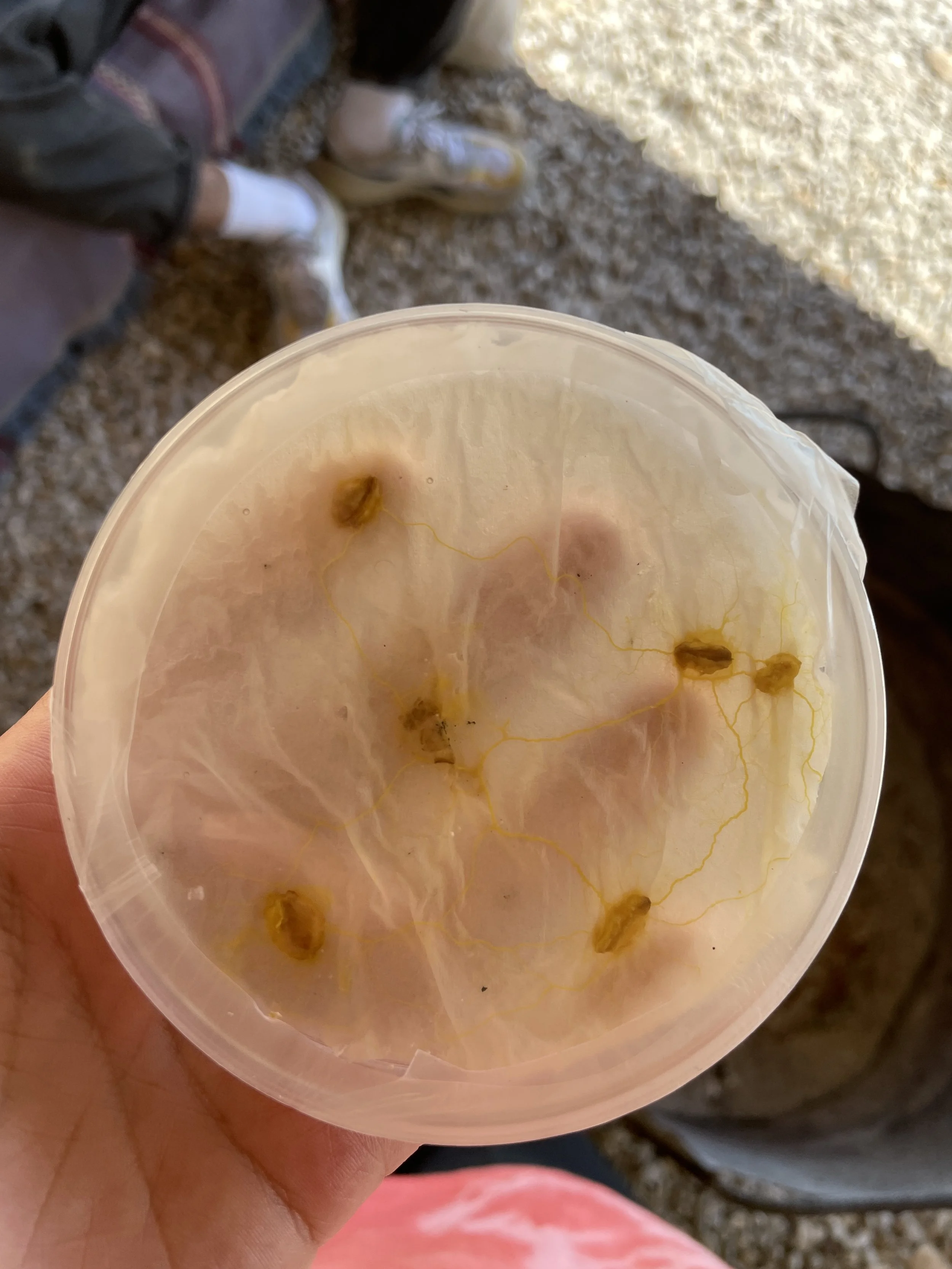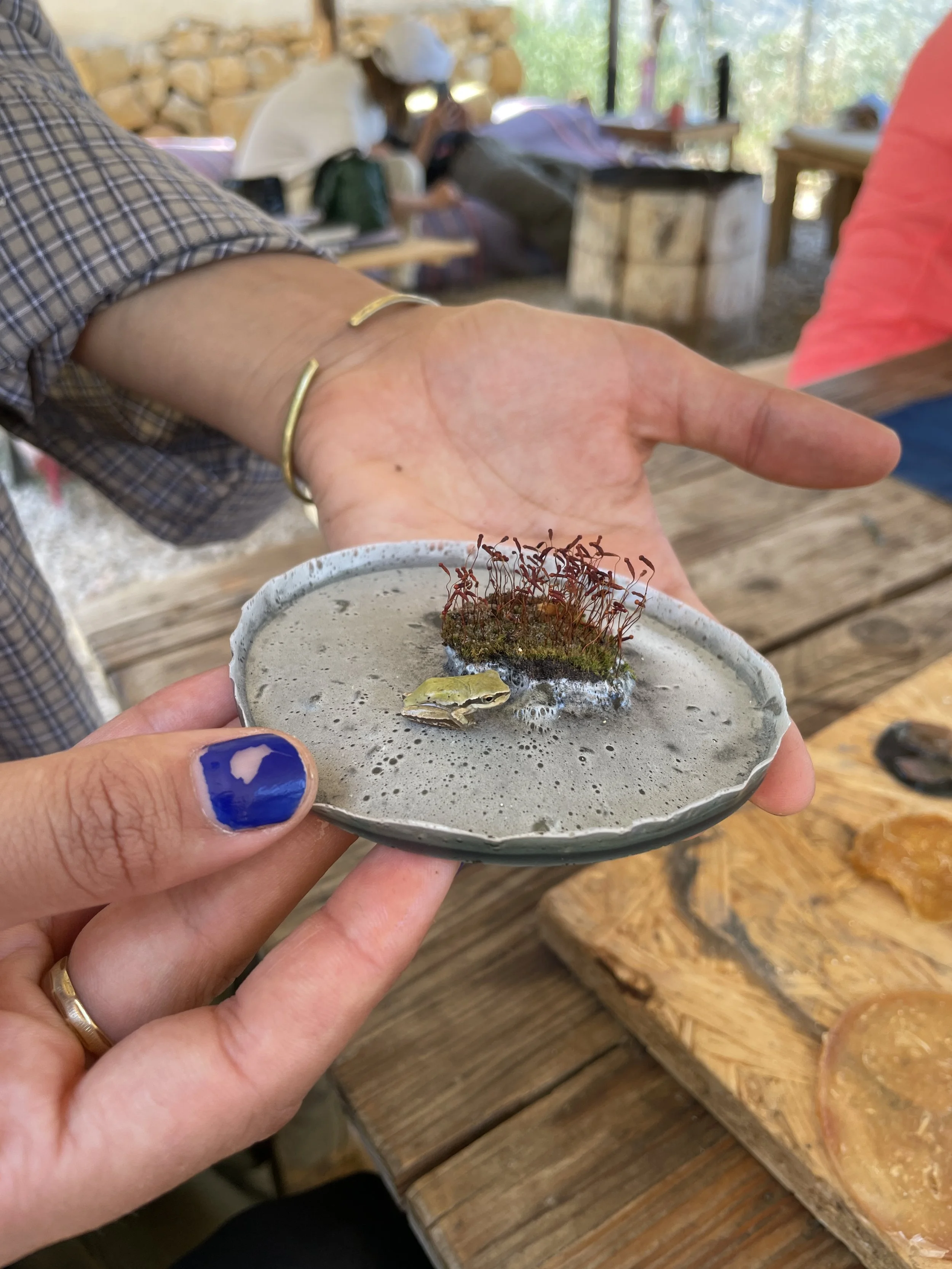Creative Space Beirut at TerraPods: A Week Immersed in Nature, Innovation, and Bio-Material Experimentation
High in the mountains, far from the city’s noise, Creative Space Beirut’s recent graduates - Iftikhar Kanawati, Jihan Azzam, Mostafa Al Sous, and Patile Tachjian - took part in a seven-day residency at TerraPods, a living biolab and agroecology farm designed for hands-on learning and slow living.
Nestled 1,600 meters above sea level in Baskinta, Lebanon, TerraPods is a living lab, artist residency, and agroecology farm founded in May 2023 by Joslin Faith Kehdy. Spanning 5,000 m² of biodiverse land with a food forest, medicinal and dye gardens, and free-grazing livestock, it cultivates biomaterial fabrication, creative ecology, and regenerative alternatives.
STEAM-led, TerraPods weaves art, science, and ecology, equipping creators with the space and resources to transform locally grown materials into bio-based feedstocks that support local creatives, economies, and cultural and ecological transformation. At its heart is a planned 150 m² learning center with a bio-design makerspace, four residency units, a community kitchen, and the EcoSouk, a marketplace for sustainable goods. With its grow-create-market model, bio-products generated on site aim to provide income streams for their makers through the EcoSouk, alongside in-house productions.
Joslin, the founder of TerraPods, is a hands-on unlearner living off-grid in Baskinta, shaping regenerative futures through creative ecology. She leads immersive experiences that connect people, practice, and place, fostering collective self-sufficiency. By uniting farming, creativity, and community, TerraPods challenges extractive systems and offers a hands-on, community-driven model for system-level change.
The workshops were led by Alve Lagercrantz, a Swedish bio-designer and researcher merging synthetic biology, digital fabrication, and grassroots collaboration to reimagine sustainability. With a background in fashion, his work currently explores how bio-fabrication and open-source tools can decentralize production, fostering symbiotic relationships between humans, microbes, and machines.
Guided by Alve and surrounded by the medicinal gardens, fruit trees, and forest terraces, the students explored the intersection of design, sustainability, and nature through intensive workshops and daily life in a biodiverse landscape. The residency offered both a change of scenery and a shift in mindset.
Participants stayed in handmade tents crafted from woven goat hair, waking up each morning to panoramic views of Mount Lebanon. Days began with fresh, locally grown meals and the crisp mountain air, before moving into a schedule of workshops on natural dyes, bioplastics, kombucha leather, alginate yarn, gelatin bioplastics, biocement, and mycelium. Each activity was grounded in TerraPods’ ethos of living “from farm to fork and land to lab.”
All four students reported gaining valuable new skills and perspectives from the experience, with key takeaways spanning material innovation, sustainability, and mindset. They explored biodegradable, algae-based, waste-based, and living materials—such as algae bioplastics and organic composites—while acquiring hands-on skills in material making.
The program deepened their understanding of the relationship between natural systems and design, highlighting how materials can be sourced, processed, and disposed of with environmental responsibility. This encouraged them to see sustainability as a long-term practice rather than a passing trend. For three students, the experience sparked a notable shift in how they think about design and its connection to the environment, moving toward more circular and mindful approaches to fashion
“It was a seven-day getaway far away from city life, up in the mountains, and surrounded by nature. We each had a tent that was handmade and cosy. Every day we learned something new, collecting from trees, plants, and flowers around us to use in our experiments.”
Mostafa Al Sous approached the residency as both an artistic and research-based exploration, focusing on the relationship between the body and the earth. His work transformed kombucha, a living organism, into a wearable or purely contemplative textile.
“Fermentation became an artistic act; the material was the result of a dialogue between bacteria, time, and humidity. Every mixture, expected or unexpected, could lead to a discovery, a new texture, or an unforeseen color.”
For Mostafa, TerraPods functioned as more than just a creative space to explore new materials—it became an “open laboratory for rethinking the relationship between art and nature, the body and material, the fixed and the ever-changing.”
Jihan Azzam found the time in nature deeply grounding.
“It created the perfect environment to slow down, observe closely, and connect with materials in a more intuitive way,” she reflected.
Drawn to bioplastics, she experimented with chia seeds, flower petals, natural dyes, as well as kombucha leather and slime mold.
“The slime mold felt like a living intelligence,” she said. “I’d love to explore it more in the future.”
For Jihan, one of the most memorable moments was a spontaneous collaboration between residents, sharing methods and swapping materials, which expanded her thinking around sustainability and design.
Patile Tachjian experienced the residency as much about creative risk as it was about discovery.
“Experimenting with unfamiliar materials was challenging, but it opened up a whole new world for me, and it was really fun,” she said, reflecting on learning through trial, error, and unexpected breakthroughs.
By the end of the residency, the students left with new skills and a renewed sense of curiosity and connection to the natural world. As Jihan put it:
“The biggest takeaway is how important it is to stay curious, to touch and test things with your own hands, and to let nature guide your process more than trends or expectations.”
For Iftikhar, the experience didn’t end when the week was over. Inspired by the possibilities of sustainable materials, she returned for a three-day mentorship focusing on apple leather, considered one of the most durable and versatile bio-leathers for product design.
This collaboration with TerraPods reflects Creative Space Beirut’s own ethos, working hand in hand with like-minded organisations that share a belief in experimentation, sustainability, and community. The residency’s emphasis on collective learning, resourcefulness, and direct engagement with materials mirrors CSB’s hands-on pedagogy, where education is rooted in practice and collaboration. It also deepens the school’s ongoing commitment to sustainability, encouraging students to approach design with ecological awareness and an openness to unconventional materials and processes.
This experience was made possible thanks to the generous sponsorship of Holdal Group and Treehouse Foundation, in support of cutting-edge biomaterial design and environmental education. We are grateful to TerraPods for the powerful reminder that design innovation thrives when it grows from the ground up, quite literally!


























